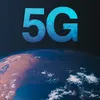Why 5G technology is critical to realise India's digital dream
From smart cities and industrial automation to connected devices, big data, and cloud computing, 5G is envisaged to be the key catalyst that can fuel India’s growth and help it compete with leading developed economies of the world.
India is on the verge of a digital revolution, powered by increasing broadband and internet penetration, exponential data uptake, digitalisation, and increasing adoption of technology across various industries. This revolution will generate new growth avenues, boost industrial productivity, and has the potential to transform the socio-economic condition of the country.
As per National Digital Communications Policy, it is believed that India’s digital economy has the potential to reach $1 trillion by the year 2025, driven by increased proliferation of smartphones, increased internet penetration, growth of mobile broadband and data, and social media.
To maintain pace and compete with leading developed economies of the world, the adoption of 5G will have an important role to play in India. From smart cities and industrial automation to connected devices, big data, and cloud computing, 5G is envisaged to be the key catalyst that can fuel this growth.
Despite joining the 5G bandwagon a little late, India has realised the importance of technology and made crucial investments in its developments. 5G, the fifth generation of wireless networks, will open the door to life-changing innovations that will flourish and dramatically change our day-to-day lives.
As India moves towards 5G deployment and aims to deliver on its digital goals and ambitions, mobile broadband must remain at the heart of the country’s policy vision. To achieve the potential of the 5G era, three critical elements are required: substantial investment in digital infrastructure; a digital environment that inspires trust; and a modernised policy and regulatory framework.
But how will this digital revolution transform industry? 5G is expected to revolutionise the industrial landscape with its enhanced Mobile Broadband (eMBB), Ultra-Reliable and Low-Latency Communications (URLLC), and Massive Machine Type Communications (MMTC) capabilities.
Manufacturing
The Indian government, with its ‘Make in India’ campaign, aims to establish the country as a global manufacturing hub through various policy measures. 5G in India is expected to provide the network to keep these factories connected in real time with suppliers/ customers etc., thereby making them smarter and much more efficient.
Agriculture and allied industries
Digitisation and the adoption of technologies like IoT, big data analytics, Artificial Intelligence, drones etc. are expected to assist in overcoming most current barriers and boost the agriculture sector by improving the productivity of yield, bringing transparency across the value chain, ensuring smarter supporting infrastructure while increasing the farm returns.
Automotive industries
Significant investment in V2X (Vehicle to everything) communication, where the vehicle communicates with varied elements such as other vehicles, infrastructure, devices, grids etc. could enable various use cases such as collision avoidance, real-time traffic routing, pedestrian’s safety alerts, etc.
In the Indian context, though, fully automated autonomous vehicles might not look like a possibility in near future due to the lack of compliance with traffic rules. But with 5G, the wave of V2X based solutions is expected to set off and basic V2X features with partial automation may become prevalent across India.
Energy and utilities
Digitisation of the energy sector in India could enhance electricity access to the population as well as improve energy efficiency and utilisation, thereby resulting in environmental sustainability. This can also help reduce unplanned outages by close monitoring of equipment, help spot human errors, and quickly localise damages due to external factors such as extreme weather.
Low latency features and high data rates offered by 5G networks have the potential to meet these requirements, which eventually could translate into effective utilisation of resources and reduced losses.
Healthcare
5G-enabled technologies like connected devices, IoT, and AI will help give a new dimension to the healthcare industry in the country, allowing for remote diagnostics and even treatment and surgeries. With 5G, reliable healthcare could be made accessible across the country. Remote diagnostics and teleconsultation will fill the gap in rural healthcare.
Education
5G can change the education sector as the future learning model could be virtual, immediate, and interactive, enabling personalisation and on-demand availability of skilled programmers. 5G will pave the way for smarter (and remote) classrooms based on mixed reality learning platforms.
Smart cities
5G networks are expected to enable a large number of connections, providing super-high bandwidth and ultra-low latency based communications, to build a connected city – a smarter city. Sensors, cameras and other automated devices can be a significant source of information to ensure public safety.
In addition to 5G providing significant network performance characteristic improvements, it is expected to also add various service dimensions beyond the traditional voice and data through enabling technologies like IoT, AI, Robotic Process Automation (RPA), Augmented Reality/Virtual Reality (AR/ VR) etc., giving rise to various use cases across different industry verticals.
Edited by Teja Lele
(Disclaimer: The views and opinions expressed in this article are those of the author and do not necessarily reflect the views of YourStory.)








